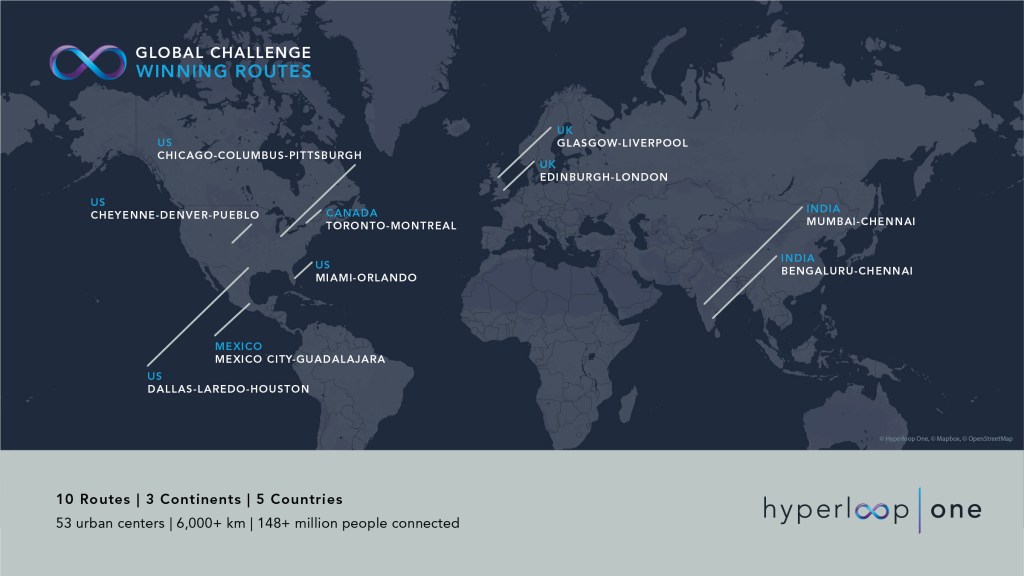Traveling from Hyperloop will be faster than bullet trains and airplanes, India has been selected for it
Of the 26,00 cities in the world, four cities of India have been selected for hyperlop projects. In January, the company identified the route for Hyperloop worldwide, under Global Challenge, where it can be set up. For this, the first 2,600 places were selected, after which only 17 countries were selected as semi-finalists. Eventually, the company has finalized five countries.
Hyperloop One wants to build a real, it held a global competition requesting proposals for routes around the world. The winners of that competition have now been announced, and the resulting routes span the U.S., the U.K, Mexico, India and Canada.
AS a result, it identified the strongest candidates with the following routes:
U.S.
- Cheyenne – Denver – Puelbo (360 miles)
- Chicago – Columbus – Pittsburgh (488 miles)
- Miami – Orlando (257 miles)
- Dallas – Houston (640 miles)
U.K.
- Edinburgh – London (414 miles)
- Glasgow – Liverpool (339 miles)
Mexico
- Mexico City – Guadalajara (330 miles)
India
- Bengaluru – Chennai (208 miles)
- Mumbai – Chennai (685 miles)
Canada
- Toronto – Montreal (400 miles)
What is the Hyperloop?
The Hyperloop concept was proposed by billionaire inventor Elon Musk, CEO of the aerospace firm SpaceX and the guy behind Tesla. It’s a reaction to the California High-Speed Rail System currently under development, a bullet train Musk feels is lackluster (and which will be one of the most expensive and slow-moving in the world).
A one way trip between San Francisco and Los Angeles on the Hyperloop could take about 35 minutes.
Musk’s Hyperloop consists of two massive tubes extending from San Francisco to Los Angeles. Pods carrying passengers would travel through the tubes at speeds topping out over 700 mph. Imagine the pneumatic tubes people in The Jetsons use to move around buildings, but on a much bigger scale. For propulsion, magnetic accelerators will be planted along the length of the tube, propelling the pods forward. The tubes would house a low pressure environment, surrounding the pod with a cushion of air that permits the pod to move safely at such high speeds, like a puck gliding over an air hockey table.
Given the tight quarters in the tube, pressure buildup in front of the pod could be a problem. The tube needs a system to keep air from building up in this way. Musk’s design recommends an air compressor on the front of the pod that will move air from the front to the tail, keeping it aloft and preventing pressure building up due to air displacement. A one way trip on the Hyperloop is projected to take about 35 minutes (for comparison, traveling the same distance by car takes roughly six hours).
Source(digitaltrends)


